| ||||||||||||||||||||||||||||||||||||||||||||||||||||||||||||||||||||||||||||||||||||||||||||||||||||||||||||||||||||||||||||||||||||||||||||||||||||||||||||||||||||||||||||||||||||||||||
 source
sourceAbout 25% of the fruits that humans consume require that their flowers be pollinated by honey bees. Honey bees digest nectar from flowers, regurgitate it into the hexagonal compartments of their honey combs, and concentrate the contents by fanning it with their wings, to form honey. The final contents of raw honey include: sugars (38.2% fructose; 31.3% glucose; 1.3% sucrose; 7.1% maltose); 17.2% water; and 1.5% complex carbohydrates. A cell’s metabolism can easily convert each of these sugars into glucose. Because of the low water concentration in the honey, yeast cells have less opportunity to grow within the comb’s compartments. Many ancient cultures used solutions of honey to facilitate an ethyl alcohol-CO2 yeast fermentation and produce an alcoholic beverage known as mead. Loss of water from the honey within the comb results in more concentrated honey. The rapid fanning of the bees’ wings requires enormous numbers of muscular contractions.
 source
source
source
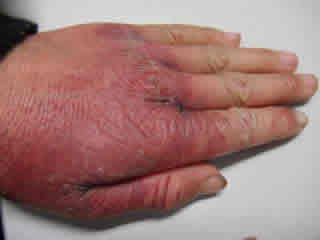
source
Cellular metabolism uses niacin as a chemical precursor (starting point) for the synthesis of NAD+. Deficiency of niacin in the diet causes a disease called pellagra. Symptoms included slowing of metabolism, dermatitis, diarrhea, dementia and even death. Most grains, with the exception of corn, have sufficient available niacin for the human diet. In the 1950s scientists began to note that pellagra appeared to occur more frequently in human populations in which corn was the exclusive source of grain. They hypothesized that “Lack of dietary niacin can be the cause of pellagra in people.” A 20-year study that examined health records in several states associated the prevalence of pellagra with the consumption of corn as the only source of grain
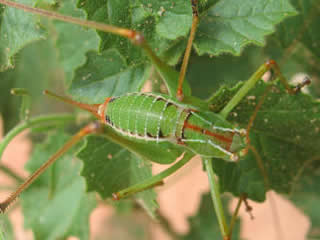 source
source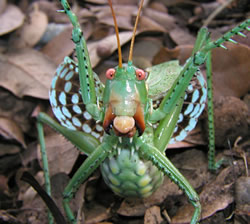 source
source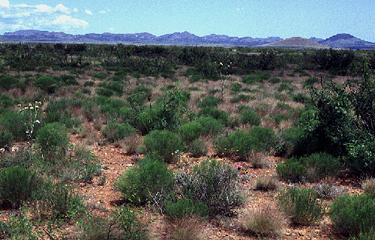
source
In western Texas, New Mexico, and Mexico is the Chihuahuan desert. Many species of katydids live in this region (katydids are like grasshoppers but with longer antennae). One of them is the greater arid-land katydid (Neobarretia spinosa, also know as the Red-eyed Devil), which has an impressively thick body and is slightly over 2 inches long. A more ordinarily sized katydid is the common short-winged katydid, Dichopetala brevihastata, which is approximately 1 inch long. The red-eye devil is an omnivore (eats plants and animals) and often eats other katydids.
An inquisitive graduate student at Oklahoma State was interested in how the red-eyed devil affected the behavior of the common short-winged katydid. Her hypothesis was that the red-eyed devil would cause the common short-winged katydid to hide and forage less. The OSU student did an experiment by placing 20 common short-winged katydids individually in cages with some food (mesquite leaves). In half of the cages the student added a single red-eyed devil in a smaller cage (so it could not eat the common short-winged katydid, but probably could scare it) and in the other cages the student added an empty small cage.
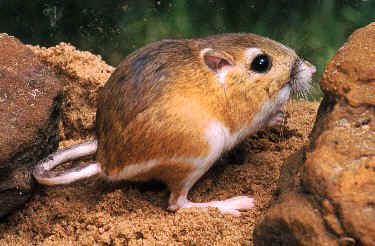 source
source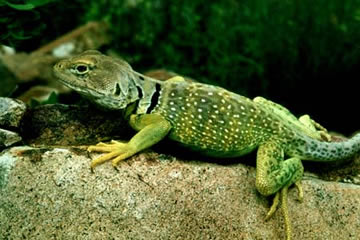 source
source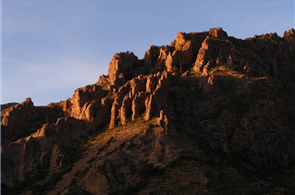 source
sourceOther species that live in the Chihuahuan desert include the collared lizard (Crotaphytus bicinctores; top right picture) and the kangaroo rat (Dipodomys ordii; top left picture). One September day, just outside of Las Cruces, NM, the overnight low temperature fell to 45°F and the high temperature the next day was 96°F. During the night in the desert, the temperature had dropped below the kangaroo rat’s thermal neutral zone.
Shortly after dawn, a very small collared lizard and an older much larger collared lizard both warmed themselves in the sun. The lizards were standing in the sunlight and on warm sand. There was no wind. Some students captured both a collared lizard and a kangaroo rat and brought them back to Oklahoma as pets The students kept both “pets” in a cooler with a small amount of ice (about 50°F) to prevent them from overheating in the car. After two weeks of travel, they arrived home and opened the cooler. Another kangaroo rat ingested rat poison that contains cyanide, which blocks the electron transport chain in the mitochondria. Yet another kangaroo rat, which was not affected by temperature extremes and poisons, was chased by a coyote.
During an afternoon football game temperatures reached 95°F and the players sweated profusely. They drank very little water during and after the game.

source
Freddie, the hamster, was excited. The winter storm had blown a tree limb through the window knocking his Habitrail™ cage to the floor and now he was free of that prison. As he was exploring the room, he heard a sound and turned to spot Bertha, a ball python, who was also freed by the storm and heading toward what she expected was a tasty meal. When under her heat lamp, Bertha’s body temperature was about the same as was Freddie’s while he was in his cage. Freddie scampered up the limb, out the window, onto the snow-covered ground and into a pipe with Bertha in pursuit. Although hamsters are rodents originally native to the cold Siberian desert, Freddie was descended from pet store hamsters and was affected by the cold weather. The pipe was like a burrow and his whiskers helped guide him into the pitch black environment. Bertha’s legless body was also well adapted to moving through dark confined spaces and used her heat sensors and tongue flicking chemical sense organs to follow Freddie. Freddie’s odor was masked by the smell of urine from the muskrat (a North American aquatic mammal) that used to live in the pipe. Will Freddie escape? Will Bertha acquire her tasty meal?
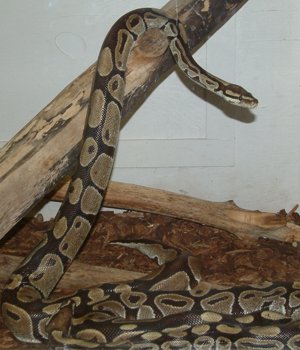
source
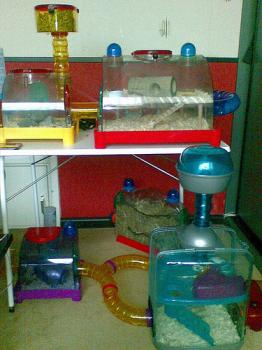
source
 source
source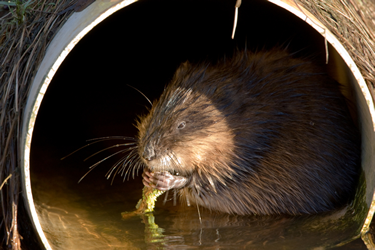
source
source
